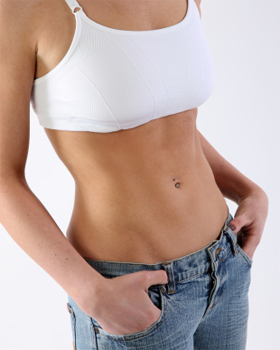December 8, 2008
In Search Of The Perfect Figure

By Michael D. Shaw
Most sources specify ideal female measurements as 36-24-36 (91-61-91 cm). Inherent in these figures (pun intended) is the “perfect” waist-to-hip ratio of 0.7. Evolutionary psychologist Devendra Singh, of the University of Texas-Austin, surveyed men in many different societies and arrived at this ratio. The subjects were shown drawings of women identical in every respect, except for the waist-to-hip ratio—which varied from 0.7 to 1.0.
Most men preferred women with the 0.7 ratio. Singh’s work has been repeated by others, who have gotten the same results. OK, but are there reasons beyond aesthetics?
Singh points out that healthy women have lower waist-to-hip ratios than unhealthy women. He notes that a goodly number of diseases, including diabetes, gallbladder disorders, heart problems, hypertension, and stroke will change the distribution of body fat. Moreover, low-ratio women tend to be more fertile.
Narrow waists have long been favored, explaining the popularity of corsets—at least in Western society. By the same token, the recent fad of young women bearing their midriffs reflects their ability to conceive. Likewise, when this is done by menopausal women, it usually is a turn-off to men.
Of course, there is another side to this story: Many women do not have the 0.7 ratio.
Now we turn to University of Utah anthropologist Elizabeth Cashdan. In an article appearing in the December, 2008 issue of Current Anthropology entitled “Waist-to-Hip Ratio across Cultures: Trade-Offs between Androgen- and Estrogen-Dependent Traits,” Cashdan argues that having a less-than-perfect body may be advantageous to at least some women.
Cashdan says that the hormones which make women stronger and better able to deal with stress will also redistribute fat from the hips to the waist.
“The hormonal profile associated with high waist-to-hip ratio…may favor success in resource competition, particularly under stressful circumstances,” notes Cashdan. “The androgenic effects—stamina, initiative, risk-proneness, assertiveness, dominance—should be particularly useful where a woman must depend on her own resources to support herself and her family.”
Is this borne out in real life? Cashdan argues that in certain societies, men are willing to trade a narrow waist for a woman who can bring home the bacon, so to speak. She cites countries where women are less economically independent (Japan, Greece, and Portugal in her example) and notes that in these places a narrow waist is valued higher than in Britain or Denmark where there tends to be more equality between the sexes.
She adds that in some non-Western societies where food is scarce and women are part of the effort to find it (if they’re not the entire effort) men prefer larger waist-to-hip ratios.
Betraying some feminist bias, Cashdan writes that: “Waist-to-hip ratio may indeed be a useful signal to men, then, but whether men prefer a WHR associated with lower or higher androgen/estrogen ratios (or value them equally) should depend on the degree to which they want their mates to be strong, tough, economically successful and politically competitive. And from a woman’s perspective, men’s preferences are not the only thing that matters.”
But, there are some other factors in play here. For one thing, higher androgen levels in women tend to increase libido, and many men might like that—perfect body or not. In addition, although cortisol is beneficial in dealing with “stressful circumstances,” as she puts it, there are plenty of negative effects associated with higher or prolonged levels of cortisol in the bloodstream, in additional to increased abdominal fat.
These include blood sugar imbalances, hypertension, suppressed thyroid function, decrease in bone density and muscle tissue, lowered immune response, slower wound healing, and even impaired cognitive performance.
While many women (and men) fall far short of having the perfect body, Cashdan’s thesis is less than appealing, and definitely runs contrary to much established thought on the matter. To me, it seems like a riff on the old high school cliché regarding how the homecoming queen is chosen: If only the boys vote, the winner is always the best looking girl. But, if the girls also vote, the winner is never the best looking girl. Rather, she’ll be pretty, but she must also be collaborative and non-threatening.

